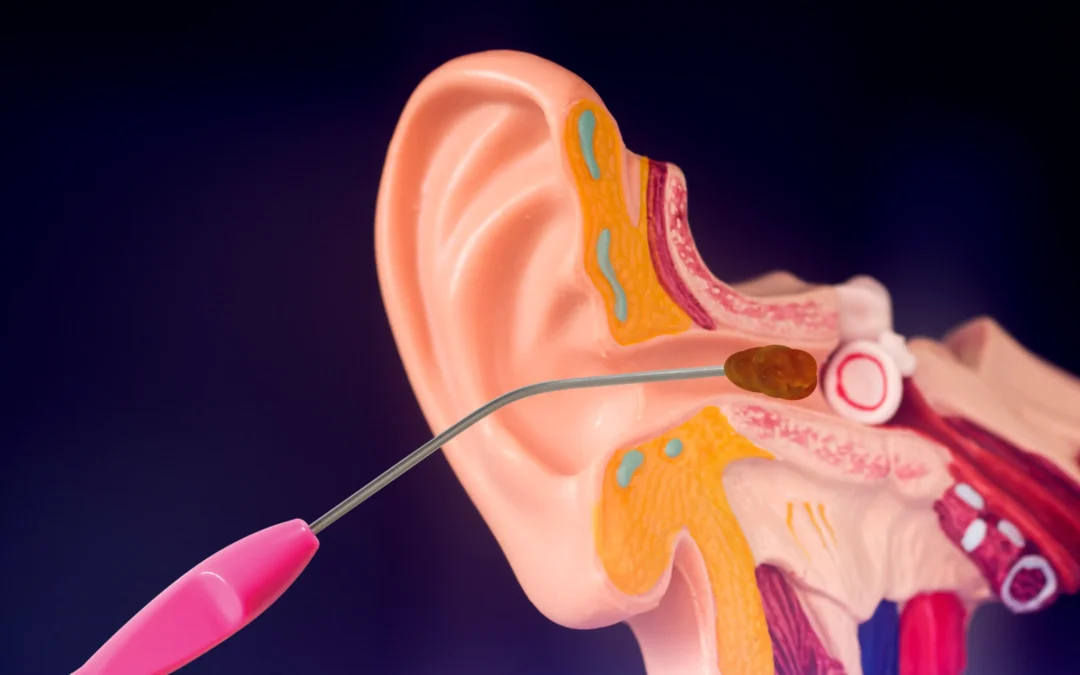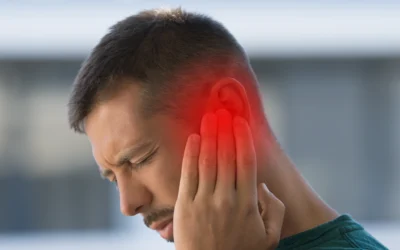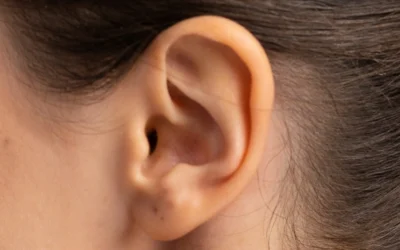Excessive earwax is a common issue that can lead to blocked ears, muffled hearing, and general discomfort. While it may be tempting to try quick fixes at home—such as cotton buds or over-the-counter ear drops—these methods often prove ineffective or pose their own risks. If you’re seeking a safe and reliable way to clear built-up earwax, microsuction earwax removal stands out as a clinically proven solution. In this ultimate guide, we’ll explore why microsuction is widely considered the safest choice, detail what the procedure entails, and provide practical advice for those considering this professional service.
1. Why Earwax Matters
Before delving into the specifics of microsuction, it’s important to understand earwax itself. Formally known as cerumen, earwax is produced by glands in the ear canal to protect against dust, debris, and bacteria. It also lubricates the ear canal, preventing dryness and irritation.
Yet sometimes cerumen accumulates to the point of blockage, causing an array of issues:
- Hearing Difficulties: Sounds may seem muffled or distant.
- Earache or Fullness: You might experience constant pressure or pain.
- Tinnitus: A ringing, buzzing, or hissing noise in the ears can be exacerbated by earwax build-up.
- Dizziness or Balance Problems: Severe blockages can affect inner ear function.
Understanding that earwax plays a protective role underscores why it’s crucial to remove it safely, without damaging the delicate structures inside your ear. This is where microsuction comes in—providing a precise, low-risk way to clear problematic wax.
2. Common Earwax Removal Methods
If you’ve ever searched for “how to remove earwax at home,” you’ve probably come across various do-it-yourself techniques. However, many of these approaches carry risks:
- Cotton Buds: Despite being common, they often push wax deeper into the canal, increasing the chance of impaction or eardrum perforation.
- Ear Candling: This unproven method can lead to burns and rarely manages to remove significant earwax.
- Over-the-Counter Ear Drops: While some drops can soften minor blockages, they may not fully resolve larger accumulations.
- Syringing/Irrigation: When performed by a trained professional, irrigation can be effective. However, it introduces water into the ear, which some patients find uncomfortable or even risky, particularly if they have perforated eardrums or a history of infections.
Given these potential drawbacks, a technique that offers greater precision and minimal discomfort is highly appealing—which is why more people are turning to microsuction.
3. What Is Microsuction Earwax Removal?
Microsuction is a procedure in which a clinician uses a specialised suction device to remove excess earwax under direct visualisation. The equipment typically includes:
- Magnification or Microscopy: Ensuring a detailed view of the ear canal and eardrum.
- Sterile, Hollow Suction Tube: Carefully manoeuvred to lift or extract earwax without needing water or high-pressure flushing.
Because the professional sees exactly where the wax is located, they can remove it with far more control than traditional methods. This direct line of sight also significantly reduces the risk of harming the eardrum or ear canal.
4. Why Microsuction Is the Safest Choice
- No Water Flushing
Unlike irrigation, microsuction does not rely on jets of water. This makes it ideal for those with sensitive ears or a history of eardrum perforation, as it minimises the likelihood of introducing infection or causing additional discomfort. - High Precision
The clinician works under magnification, allowing them to target wax only—there’s less chance of pushing wax deeper or missing areas altogether. This fine control also makes it suitable for removing smaller or stubborn pieces of wax. - Minimal Discomfort
Most patients describe microsuction as feeling like a gentle vacuum in their ear. You may hear a mild hissing or slurping sound, but it’s generally painless and quick. - Reduced Risk of Complications
By avoiding the forceful techniques often seen with syringing or DIY methods, microsuction greatly reduces the risk of damage to the ear canal or eardrum. It also lowers the chance of infection, as the environment remains relatively dry and sterile.
5. Step-by-Step Guide to a Microsuction Procedure
5.1 Consultation and Examination
When you arrive for your appointment, the practitioner will review your medical history and current symptoms. They’ll likely use an otoscope or microscope to check the level of earwax build-up. If any signs of infection or other issues (like a perforated eardrum) are found, the clinician may advise further assessment or treatment before proceeding.
5.2 Preparation
In some cases, you may be told to apply ear drops for a few days before your appointment. This helps soften particularly hard or impacted wax, making it easier to remove.
5.3 Microsuction Removal
You’ll sit comfortably, often in an upright position, while the clinician looks into your ear with a microscope or magnification lens. A small suction tube is then used to gently extract the wax. The sensation is usually described as a light pulling or vacuum sensation—virtually painless, though you may hear mild noise.
5.4 Checking Progress
The practitioner might pause occasionally to inspect the ear canal and gauge how much wax remains. If any wax is too dry or sticky, an instrument could be used to loosen it before the final suction.
5.5 Post-Procedure Inspection
After the procedure, the clinician will take another look to ensure your ear is fully clear. You’ll receive personalised aftercare advice, such as avoiding cotton buds or using certain drops to prevent rapid reaccumulation.
6. Who Can Benefit from Microsuction?
Microsuction is generally suitable for most people, including children, adults, and the elderly. It’s especially beneficial for:
- Individuals with Narrow Ear Canals: In these cases, wax build-up is more common, making a targeted approach essential.
- Hearing Aid Users: Devices can push wax further into the ear, leading to frequent blockages.
- People with Sensitive Ears: If you’ve found ear syringing uncomfortable in the past, microsuction offers a gentler alternative.
- Those Prone to Recurring Wax: Regular microsuction sessions can help maintain clear ears, preventing more severe complications.
7. The Role of Professional Assessment
While microsuction is known for its safety and effectiveness, it should still be performed by a trained specialist—often a nurse, audiologist, or doctor experienced in ear care. These professionals follow strict hygiene protocols, use sterile equipment, and know when to advise an alternative treatment if microsuction isn’t appropriate (for example, in active ear infections or significant ear canal damage).
Reputable clinics will also provide transparent pricing, outline any deposit or cancellation policies, and offer convenient booking options. Look for signs of professionalism, such as membership in recognised healthcare bodies, up-to-date training certifications, and positive patient reviews.
8. Aftercare and Preventive Measures
Following your appointment, it’s important to maintain healthy ear hygiene. This may include:
- Avoiding Cotton Buds: These can push wax deeper and risk irritation.
- Using Ear Drops if Recommended: If your clinician suggests it, occasionally using oil or special drops can keep wax soft.
- Scheduling Annual Check-Ups: If you’re prone to blockages, having your ears checked once or twice a year can catch problems early.
- Protecting Ears in Noisy Environments: Loud sounds can sometimes worsen tinnitus symptoms if they’re related to wax build-up. Earplugs or noise-cancelling devices may be beneficial.
9. Frequently Asked Questions
- How quickly does microsuction work?
Most procedures last 15–30 minutes, and you usually experience immediate relief once the wax is cleared. - Is microsuction suitable for children?
Yes, provided they can remain relatively still during the procedure. Many clinics offer child-friendly services. - Will I feel any pain?
Discomfort is rare. You may feel a slight suction or pulling sensation, but the majority of patients report no pain. - Can earwax reaccumulate?
It can, especially if you naturally produce excessive wax. However, following recommended aftercare and scheduling periodic checks can help prevent severe blockages.
10. Conclusion
Microsuction has rapidly become the go-to method for safe, efficient earwax removal, and for good reason. With its direct visualisation, minimal discomfort, and low risk of complications, this technique stands head and shoulders above many traditional and DIY methods. Whether you’re struggling with reduced hearing, earache, or a persistent feeling of fullness, booking a microsuction appointment can offer immediate relief and long-lasting benefits.
Investing in professional ear care doesn’t just clear your ears—it can dramatically improve your quality of life, helping you re-engage with conversations, music, and the world around you. If earwax is holding you back, don’t hesitate to consult a qualified clinic and discover firsthand why microsuction is the safest choice for addressing stubborn blockages. You’ll soon be hearing clearly again and enjoying a renewed sense of comfort and confidence.
Don’t Suffer in Silence: Discover the Life-Changing Benefits of Professional Earwax Removal
Excess earwax might seem like a minor nuisance, but for many people it can become a significant barrier to everyday...
Earwax Myths Debunked: Separating Fact from Fiction
Earwax might be one of the most misunderstood substances in the human body. From cotton buds to ear candling, there’s...
Earwax and Overall Health: Why Maintaining Healthy Ears Matters
Earwax is more than just a waxy substance in your ear—it serves as a first line of defence against dirt, bacteria, and...



